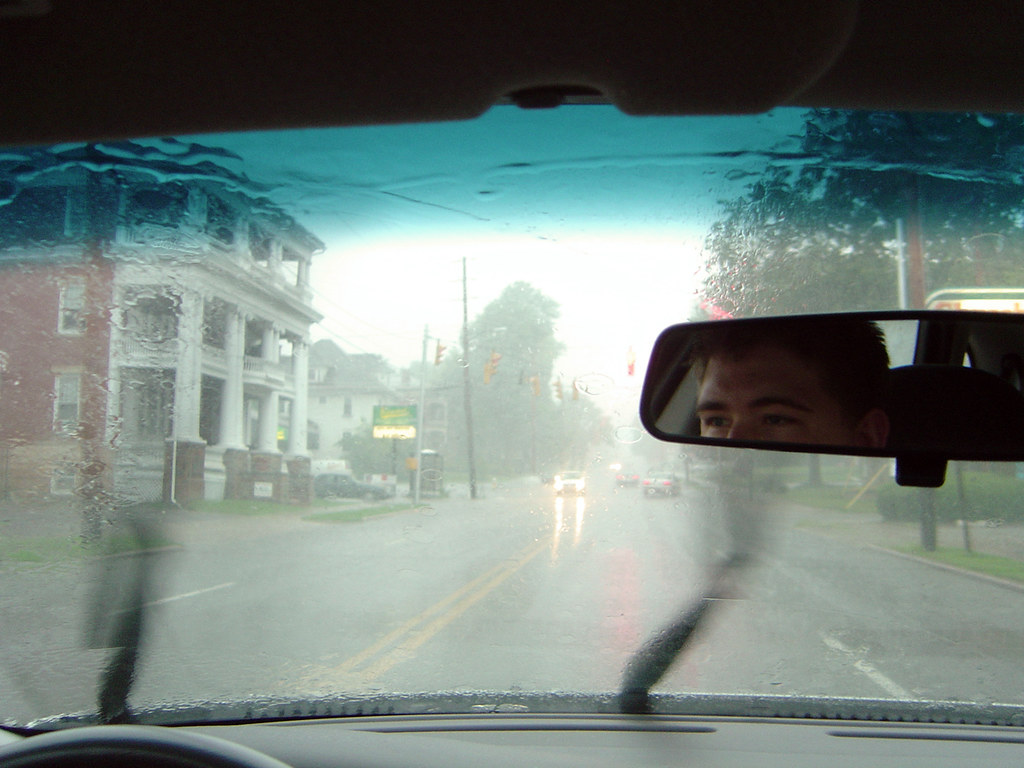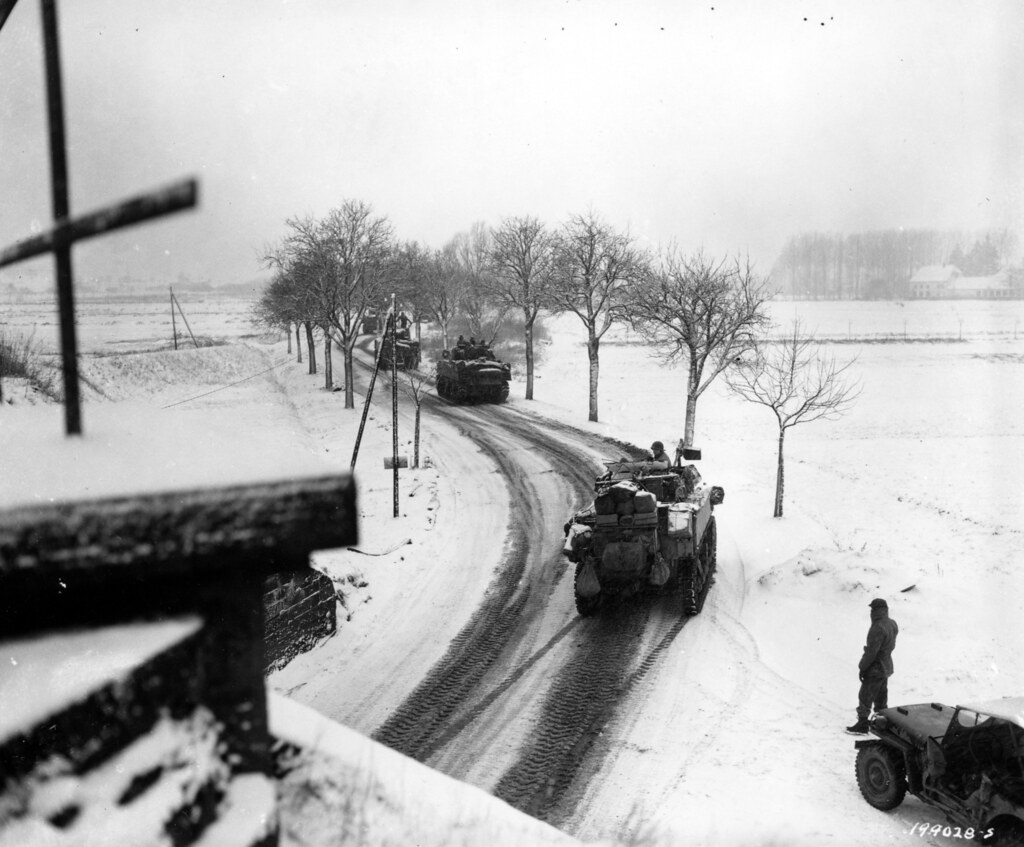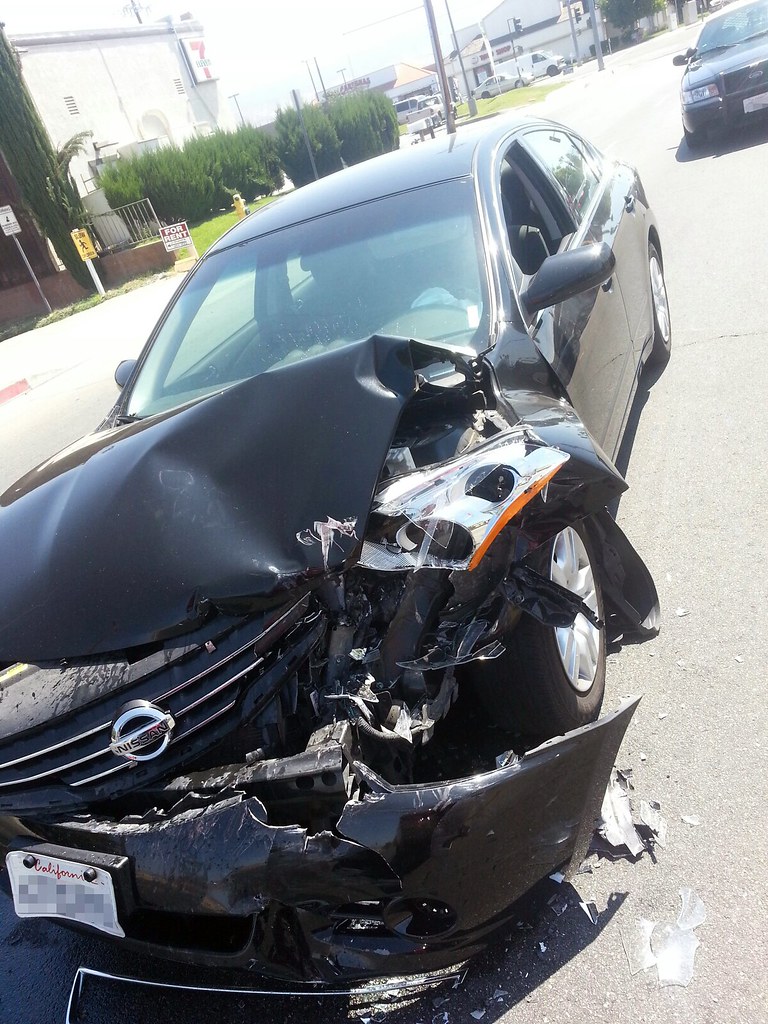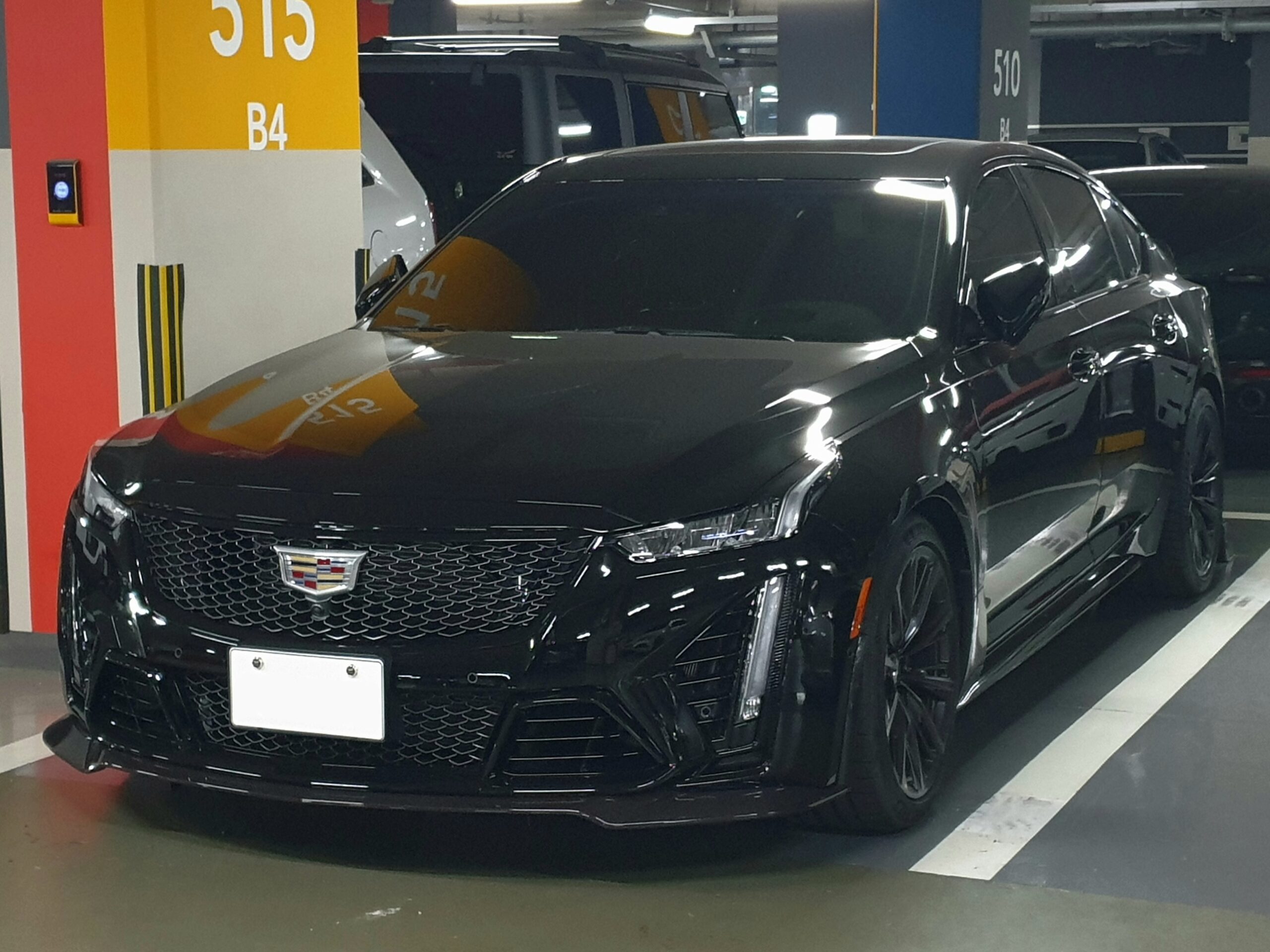
On a Wednesday in early September 2025, a seemingly routine traffic stop on the George Washington Parkway escalated rapidly into a complex security incident that prompted a temporary lockdown at the Central Intelligence Agency’s headquarters in Langley, Virginia. The event, which involved U.S. Park Police, Immigration and Customs Enforcement (ICE) officers, two separate vehicle pursuits, and multiple individuals fleeing onto the highly sensitive CIA property, underscored the unpredictable nature of law enforcement operations near critical national security installations.
The sequence of events created a chaotic scene, snarling traffic and raising immediate concerns about the perimeter security of one of the nation’s foremost intelligence agencies. Initial reports and subsequent corrections highlighted the confusion that ensued, both on the ground among the law enforcement agencies involved and within the CIA itself, concerning the nature and origin of the threat.
This incident, reported extensively by various news outlets, serves as a compelling case study in inter-agency coordination challenges, the rapid escalation of routine encounters, and the robust security protocols that underpin the operations of a facility like the CIA headquarters. Examining the distinct phases of this event provides critical insights into the dynamics of such high-stakes situations.

1. The Initial Traffic Stop and Law Enforcement Presence
The complex events of Wednesday, September 10, 2025, commenced with what should have been a standard traffic stop conducted by U.S. Park Police on the George Washington Parkway. This key thoroughfare, notable for running directly adjacent to the Central Intelligence Agency’s sprawling headquarters in Langley, Virginia, became the initial stage for an unfolding security drama.
Critically, the U.S. Park Police were not operating in isolation. They were supported by officers from Immigration and Customs Enforcement (ICE), a detail that would later add layers of complexity and confusion to the overall incident. The presence of both agencies signaled a coordinated effort, though the full implications of this joint operation would become clearer as events progressed.
This convergence of federal law enforcement agencies for a traffic stop in such close proximity to the CIA immediately set a serious tone. The George Washington Parkway’s strategic location meant that any significant law enforcement activity there inherently carried a heightened level of sensitivity due to its proximity to a site of national importance. The initial approach to the vehicle was thus fraught with underlying, albeit then-unrealized, potential for escalation.
Read more about: TMZ’s Public Reckoning: Unpacking the ‘Tone Deaf Laughter’ Controversy During Charlie Kirk Death Coverage

2. The First Vehicle’s Evasion and Pursuit
Upon being approached by the U.S. Park Police and ICE officers, the driver of the initial vehicle refused to comply with law enforcement directives. Instead of stopping and turning off the car, the driver made the dangerous decision to accelerate, speeding off and initiating an immediate flight from the scene. This act instantly transformed a routine traffic stop into an active pursuit.
The Department of Homeland Security (DHS) later confirmed that the driver’s abrupt departure was not only non-compliant but also dangerous, as the vehicle “nearly hit Park Police and ICE officers.” This reckless maneuver underscored the driver’s intent to evade capture at any cost, elevating the stakes significantly for the pursuing officers and any civilians nearby.
Both U.S. Park Police and ICE officers promptly engaged in a pursuit of the fleeing vehicle. The rapid escalation from a stationary traffic stop to a high-speed chase on a major parkway near a sensitive government facility introduced an unforeseen and critical challenge for the law enforcement teams involved, demanding immediate, coordinated action to ensure public safety and secure the individuals.
Read more about: Driving Experts Reveal 12 Calm Safe Hacks to Neutralize Aggressive Drivers and Road Rage

3. Reckless Driving and Public Safety Risks During Pursuit
The pursuit of the first vehicle quickly intensified, marked by extremely dangerous and illegal driving behavior on the part of the fleeing driver. According to the Department of Homeland Security statement, the driver demonstrated a flagrant disregard for both law enforcement and public safety by executing a highly perilous maneuver: they “jumped the median traveling south on northbound lanes of the parkway.”
This desperate act created an immediate and severe hazard on the George Washington Parkway, endangering not only the lives of the pursuing officers but also countless innocent motorists traveling in the vicinity. Such a move on a busy public roadway near the nation’s capital represents a profound breach of traffic laws and an extreme risk to the public welfare, escalating the incident beyond a mere evasion.
The gravity of these actions underscored the driver’s determination to escape, regardless of the potential consequences. The pursuit was no longer simply about apprehending a non-compliant driver; it had become a critical incident focused on neutralizing an immediate public safety threat posed by a vehicle actively jeopardizing others on the road. The chaotic scene unfolded rapidly, demanding swift and decisive responses from the pursuing authorities.
Read more about: Is Your Ride a ‘Menace’? Unpacking the 12 Cars That Scream ‘Terrible Driver Vibes’ on the Road!

4. The Apprehension from the First Vehicle
The high-speed pursuit of the first vehicle eventually reached a critical juncture where the occupants abandoned the car. After the driver’s dangerous maneuvers on the George Washington Parkway, the vehicle was ultimately brought to a stop, at which point the three individuals inside fled on foot, attempting to escape into the surrounding area.
Law enforcement officers quickly engaged in a foot pursuit of these individuals. This phase of the operation required rapid response and containment, as the wooded and suburban areas adjacent to the parkway could provide cover for those attempting to evade capture. The immediate priority was to secure the individuals who had posed a significant public safety risk.
In the direct aftermath of their flight from the vehicle, officers successfully apprehended one of the three occupants. This initial apprehension marked a partial success in bringing the immediate chase to a conclusion, though the fact that two individuals remained at large from the first car indicated that the security situation was still very much active and evolving, necessitating ongoing efforts.
Read more about: Roadside Regrets: 14 Vehicles Owners Wish They Could ‘Un-Purchase’ and Why They’d Slam the Brakes on a Do-Over

5. The Second Vehicle’s Unexpected Involvement
As the chaotic scene involving the first car and its occupants unfolded, an entirely separate vehicle unexpectedly approached the area where law enforcement officers were present. This second car, not initially involved in the traffic stop or subsequent chase, inadvertently drove into the immediate vicinity of the ongoing enforcement action, adding another layer of complexity to the already tense situation.
Upon witnessing the significant law enforcement presence – including U.S. Park Police and ICE officers – the occupants of this second vehicle reacted with what the Department of Homeland Security described as panic. Their immediate response was not to comply or seek information, but instead to make a spontaneous decision to flee the scene, further complicating the operational environment for the officers.
This independent flight by the second vehicle’s occupants was a critical development, diverging from the direct pursuit of the first car. It introduced a new, unanticipated element to the unfolding incident, suggesting that the sight of law enforcement, particularly ICE, prompted an immediate and desperate reaction among individuals who may have harbored concerns about their immigration status, thereby creating a parallel security challenge.
Read more about: Brace Yourself: The 10 Cars That Instantly Trigger ‘Bad Driver’ Alarms on the Road

6. The Flight onto CIA Grounds and Perimeter Breach Attempt
The panic-driven flight of the occupants from the second vehicle led directly to one of the most significant and alarming aspects of the entire incident: their decision to flee onto the property of the Central Intelligence Agency. In their desperate attempt to evade law enforcement, these individuals made a critical error by entering one of the most secure and sensitive government compounds in the United States.
Eyewitness accounts and official statements confirmed that these individuals actively attempted to breach the physical security of the CIA headquarters. They were observed trying to “scale a fence surrounding the agency’s headquarters,” a clear and unambiguous attempt to bypass the established perimeter defenses of the highly protected facility. This action immediately triggered heightened security alerts across the entire complex.
The very act of attempting to enter CIA grounds, particularly by scaling fences, is a felony and represents a grave security breach. While the individuals were not targeting the agency itself, their flight inadvertently transformed a domestic law enforcement incident into a serious national security concern, directly prompting the agency’s lockdown protocols and drawing attention to the vulnerabilities of its outer perimeter.

7. The Immediate CIA Response and Internal Confusion
The sudden influx of individuals attempting to scale its perimeter fences immediately triggered an extensive security response within the Central Intelligence Agency’s sprawling Langley headquarters. This unexpected breach, albeit by individuals not directly targeting the agency, necessitated an immediate and comprehensive activation of established security protocols, designed to safeguard one of the nation’s most sensitive intelligence facilities. The primary objective was to ensure that the integrity of the compound remained uncompromised and that all personnel were protected from any potential threat.
However, the initial moments of the incident were characterized by a significant degree of internal confusion regarding the precise nature of the threat. According to individuals briefed on the matter, some CIA officials initially operated under the mistaken belief that the incident stemmed from an immigration raid on a nearby construction site. This misperception underscored the chaotic environment and the fragmented understanding of the unfolding events as they were perceived from within the agency’s secured confines, highlighting a critical information gap.
The immediate and paramount response was to secure the perimeter, which involved a temporary shutdown of access to the entire complex. This measure, while essential for containment and assessment, led to significant disruption, with some intelligence officers finding themselves stranded in their vehicles, both on their commute into the facility and within its vast parking lots. Such a rapid and extensive lockdown clearly highlights the rigorous, albeit disruptive, nature of the agency’s security posture when faced with perceived threats.
A spokesperson for the CIA, responding to initial inquiries, confirmed that law enforcement had indeed responded to a security incident at the agency’s headquarters. However, in line with standard protocols for sensitive matters, no additional details were immediately provided, indicating the agency’s cautious approach to disseminating information during an active security event that was still being fully understood and contained.
Read more about: The Unvarnished Truth: Unraveling Robin Williams’ Final Months and the Battle with Lewy Body Dementia

8. Critical Breakdown in Inter-Agency Communication
A significant contributing factor to the initial confusion and the subsequent operational challenges at the CIA headquarters was a critical lapse in inter-agency communication. The Department of Homeland Security statement later confirmed that Immigration and Customs Enforcement (ICE) officers, who were integral to the initial traffic stop and subsequent pursuits, had not provided advance notification to the CIA regarding their planned enforcement actions in the immediate vicinity of the agency. This oversight proved to be a pivotal point in the rapid escalation of the incident.
The lack of pre-notification meant that the CIA was caught completely off guard by the sudden appearance of fleeing individuals attempting to enter its property. Had there been prior communication, the agency could have been adequately prepared for potential spillover effects from a law enforcement operation nearby, allowing for preemptive security measures or a more informed initial response. Instead, the events unfolded as a complete surprise, compelling the agency to react to an unannounced and rapidly evolving situation without prior intelligence.
This absence of coordination “added to the chaos of the situation,” as noted by sources briefed on the incident. Effective inter-agency communication is a cornerstone of national security operations, particularly when activities by one federal entity could directly impact the security posture of another, highly sensitive installation. The incident underscored the vital importance of established protocols for information sharing, which were evidently lacking in this particular instance and led to unintended consequences.
The scenario highlighted a systemic vulnerability where routine law enforcement actions, when conducted without appropriate liaison with nearby critical infrastructure, can inadvertently trigger high-level security alerts. This incident serves as a stark reminder that even seemingly localized operations by one agency can have far-reaching implications for others, demanding a robust framework for communication and cooperation that was clearly not fully engaged here.
Read more about: D.C. Under Siege? Federal Law Enforcement Presence Sparks Outrage and Confrontation on Busy City Streets

9. Resolution of the Perimeter Breach and Apprehensions
The immediate and coordinated efforts of law enforcement and CIA security personnel ultimately led to the swift resolution of the perimeter breach and the apprehension of the individuals involved. From the second vehicle, which had approached the scene and whose occupants then panicked and fled onto CIA property, officers successfully apprehended three of the four individuals. This brought a significant portion of the immediate threat to the agency’s perimeter under control, allowing for a more thorough assessment of the situation.
Among those apprehended from the second car, a crucial detail emerged: one individual had previously been removed from the United States on two separate occasions, according to information provided by the Department of Homeland Security. This background information sheds considerable light on the desperate nature of their flight upon encountering law enforcement, suggesting a clear motive to evade further immigration enforcement, though their ultimate destination and specific intent remained unclear at the time.
Despite the dramatic nature of the attempted breach and the subsequent lockdown, official assessments later confirmed that the individuals who tried to scale the fences “did not breach headquarters security or pose any threat” to intelligence officials or the agency’s internal operations. They did not manage to penetrate beyond the initial perimeter, nor did they gain access to any of the secure buildings within the complex. This reassurance was critical in de-escalating the alarm within the agency’s highly sensitive environment.
The temporary shutdown of access to the agency’s campus lasted for “more than an hour,” demonstrating the seriousness with which the CIA addressed the incident, even in the absence of an active direct threat to its core functions. The resolution involved meticulously checking the campus perimeter to ensure its integrity and that no further security vulnerabilities existed. Once satisfied, the lockdown was lifted, and normal operations gradually resumed, albeit with a clear understanding of the unusual circumstances that had transpired.
Read more about: Sacramento Manhunt Concludes: Three Suspects in Custody After High-Speed Chase and Shooting

10. Legal Ramifications and Unanswered Questions
The act of attempting to enter the Central Intelligence Agency’s grounds, particularly by scaling its perimeter fences, carries significant legal weight within the United States judicial system. Such an action is unequivocally classified as a felony, reflecting the critical importance and sensitive nature of the facility. The legal statutes governing unauthorized entry into federal installations are rigorously enforced and designed to deter any attempts to compromise national security assets.
Despite the clear legal classification of such an act, officials involved in the incident did not immediately disclose what, if any, specific charges the apprehended individuals might face. This deferral of information could be attributed to ongoing investigations, the complexities of federal and immigration law, or a strategic decision to manage public information during a sensitive period. The process of formally charging individuals in such a high-profile case often involves thorough review by prosecutors and careful consideration of all pertinent circumstances.
A key unanswered question hovering over the incident pertains to the awareness and intent of the individuals who fled onto CIA property. “It is not clear whether the people fleeing the immigration authorities knew where they were going as they fled,” according to reports. This ambiguity leaves open the possibility that their desperate flight was an opportunistic attempt to escape capture, rather than a premeditated effort to target the intelligence agency itself, which would significantly alter the legal and security implications.
The incident thus presents a complex legal and investigative challenge for authorities. While the physical act of attempted breach is a clear felony, the specific motivations and knowledge of the individuals could influence the exact nature of the charges brought against them and the subsequent legal proceedings. The unfolding legal process will likely seek to clarify these details, shedding further light on the intent behind their flight and their understanding of the sensitive nature of the property they entered.
Read more about: Unspoken Grief: The Definitive Account of Matthew Perry’s Death, Its Aftermath, and the Unraveling of a Supply Network

11. Historical Precedents: Earlier Security Incidents at CIA Headquarters
While the September 2025 incident involving a perimeter breach was unprecedented in its specific origins, the Central Intelligence Agency’s headquarters has unfortunately not been immune to security challenges over its history. Such incidents, though varied in their nature and severity, underscore the constant vigilance required to protect a facility that serves as a focal point for global intelligence operations. Examining past events provides crucial context for understanding the agency’s enduring security imperatives.
One of the most tragic and notable security incidents occurred in 1993, when two CIA employees were shot inside their car just outside the compound. This devastating attack, which resulted in fatalities, highlighted the inherent vulnerabilities that can exist even in the immediate vicinity of a highly secured facility. It demonstrated unequivocally that threats can originate from external actors with malicious intent, directly targeting personnel associated with the agency as they traverse public access points.
This 1993 event served as a stark and painful reminder of the real-world dangers faced by intelligence personnel and the critical importance of layered security measures that extend beyond the physical perimeter of the agency’s buildings. It prompted significant reviews and enhancements to security protocols, focusing not only on internal defenses but also on safeguarding the transit and access points for the thousands of individuals who work at or visit the Langley complex each day.
The memory of such a serious incident undoubtedly informs the agency’s rapid and robust response to any perceived security threat, regardless of its immediate character. While the 2025 event was born of an immigration enforcement action rather than a direct attack on the agency, the principle of immediate, decisive action to protect the compound and its personnel remains paramount, shaped by past experiences that illustrate the potential for external threats to materialize suddenly and tragically.

12. More Recent Security Incidents: The March 2025 Standoff
Beyond historical events, the CIA headquarters has faced more recent security challenges, demonstrating a continuous need for adaptability in its defense strategies. Just months before the September 2025 perimeter breach, in March 2025, the agency experienced another significant security incident that tested its response capabilities and led to widespread disruption in the immediate area. This event involved a tense standoff with an individual outside the main entrance.
On Wednesday, March 19, 2025, a person was taken into custody after an hours-long standoff with police at the CIA headquarters. This incident commenced when a man drew a handgun outside the entrance, immediately escalating a potentially volatile situation that demanded a swift and coordinated response. The effort involved Fairfax County police, who provided crucial assistance, indicating a multi-agency effort to contain and resolve the threat, similar to the September events in terms of inter-agency cooperation on the ground.
The standoff concluded after approximately five hours, with the individual ultimately surrendering to negotiators. This successful resolution, achieved without further violence, highlighted the effectiveness of coordinated law enforcement and specialized negotiation tactics in de-escalating dangerous situations. During the standoff, Dolley Madison Boulevard, a key thoroughfare, was shut down in both directions between Georgetown Pike and Savile Lane, causing significant traffic delays and demonstrating the extensive ripple effect of security incidents at such a high-profile location.
The March 2025 standoff, alongside the September 2025 perimeter attempt, collectively underscore that security incidents at the CIA headquarters are “not uncommon.” They range in nature from direct threats involving weapons to inadvertent breaches stemming from unrelated law enforcement actions. Each event serves as a critical learning experience, continuously informing and refining the agency’s comprehensive security protocols and its capacity for rapid, coordinated response in a perpetually evolving threat landscape.
The September 2025 incident at the CIA headquarters, initiated by a seemingly routine traffic stop, evolved into a complex narrative that reverberated through the realms of national security, immigration enforcement, and inter-agency coordination. It served as a potent illustration of how unforeseen circumstances can rapidly transform a local law enforcement action into a federal security challenge, prompting lockdowns and intensive scrutiny. This event, alongside historical and more recent security episodes, reinforces the enduring need for stringent security measures and seamless communication among all federal entities operating near critical national assets. The lessons learned from this chaotic day undoubtedly contribute to the ongoing refinement of protocols designed to protect the nation’s intelligence heartland from all manner of threats, whether intentional or accidental.



